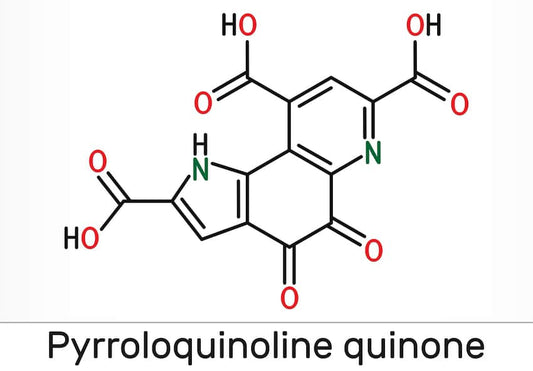Toxins seem to hide everywhere. Whether it’s in the food you eat, the moisturizer you put on your skin, the shampoo you clean your hair with, or the spray you use to wipe your kitchen counters, there’s no end to where you find them.
But even if you’re conscious about what you eat, how you clean, and what products you use on your body, somehow, toxins and free radicals still seem to accumulate.
How?
That person sitting at the table beside you smoking.The car games you’re walking through daily.Or simply the air you’re breathing.
Environmental toxins, exercise, cigarette smoking, and normal metabolic processes all generate free radicals that, when in excess, can do major damage to the body. And if you’re not taking in what your antioxidant defense system needs to operate optimally and combat the bad guys, it’s inevitably going to lead to problems.
That means finding other ways to mitigate the effects is essential to maintain health. While practicing good lifestyle habits is a solid step in the right direction, your supplementation protocol can also make a huge difference.
There are several antioxidants to choose from—vitamin C, vitamin E, glutathione—but one we rarely hear about is lipoic acid. It’s a naturally occurring antioxidant that may offer even more powerful health-promoting benefits. So, in lieu of that, we’re talking about R-lipoic acid and why you need to be taking this antioxidant.
What Is Lipoic Acid?
Lipoic acid, commonly seen in the form of alpha-lipoic acid, is a naturally occurring dithiol compound that plays an essential role in mitochondrial bioenergetic reactions and has gained a lot of attention as a powerful antioxidant for use in the treatment of several diseases 1.
It’s been shown to quench reactive oxygen species (ROS), chelate certain metal ions, and regenerate other antioxidants like vitamin C, vitamin E, and glutathione.
What’s more, it’s also been shown to inhibit nuclear factor kappa B (nf-kB) and activate AMPK in skeletal muscles, resulting in many metabolic consequences 1. It acts on multiple mechanisms to promote a wide array of health benefits, which is why it’s coming onto people’s radars.
While widely available in food and supplements, lipoic acid is also synthesized enzymatically in the mitochondria of both plants and animals from octanoic acid and cysteine, and acts as a cofactor for several key enzymes involved in energy production 1.
The Difference Between R-Lipoic Acid And Alpha-Lipoic Acid
If you’ve heard anything about lipoic acid, chances are you’ve heard it in the form of alpha-lipoic acid, sometimes called ALA. It’s the most widely consumed form of lipoic acid, but it’s not the only one.
Lipoic acid comes in two forms: R-lipoic acid and S-lipoic acid, both of which are enantiomers of alpha-lipoic acid. Because lipoic acid contains an asymmetric carbon group, it can exist in two optical isomers, also known as enantiomers, and they are mirror images of each other.
However, only R-lipoic acid can be synthesized in the body and is naturally found in food, whereas S-lipoic acid is often seen in supplement form combined with R-lipoic acid.
Of the two, R-lipoic acid is the more active isomer, which is why we generally see more benefits. But while both forms of lipoic acid do offer health benefits, we back bio-enhanced R-lipoic acid.
Bio-Enhanced® Na-RALA is a purified, stabilized, and nature-identical salt form that helps eliminate gastric side effects associated with lipoic acid supplementation and maximize bioavailability. It’s the highest quality, most potent form of lipoic acid available that supports mitochondrial synthesis and energy metabolism more effectively.
The Benefits Of Taking R-Lipoic Acid
Unlike glutathione, the major endogenous antioxidant, which only the reduced form has antioxidant capability, both the oxidized and reduced (DHLA) forms of lipoic acid offer powerful antioxidant properties. Here’s what they do.
- Quenches reactive oxygen species (ROS): Oxidative stress and excessive free radicals underline a number of chronic diseases, including aging, diabetes, cancer, and cardiovascular diseases 2. Unlike many other antioxidants that are either fat-soluble or water-soluble, lipoic acid is both, meaning that it exhibits antioxidant action in both the cytosol and plasma membrane. Both LA and DHLA scavenge reactive oxygen and nitrogen species to protect cells against lipid peroxidation and subsequent damage 1. What’s more, DHLA may also be able to regenerate other endogenous antioxidants and neutralize free radicals without itself becoming one in the process (something that happens to other antioxidants).
- Regenerates other antioxidants: When antioxidants react with a free radical, in the process of neutralizing the radical, the antioxidant itself becomes oxidized, which means it loses its ability to function again until reduced 1. DHLA, the reduced form of lipoic acid, is able to reduce oxidized forms of antioxidants like vitamin C and E, glutathione, and ubiquinone (CoQ10) to allow for stronger antioxidant defenses. What’s more, lipoic acid has also been shown to boost glutathione levels by increasing cysteine uptake.
- Chelates metals: Heavy metal toxicity is known to be disastrous for neurological function, and because lipoic acid contains two thiol groups, both LA and DHLA possess metal chelating properties 1. Studies show that alpha-lipoic acid is a powerful chelator of divalent metal ions and can form stable complexes with manganese, copper, iron, lead, and zinc.
While lipoic offers some really powerful antioxidant activity, it also has a few other functions:
- Regulates glucose uptake: Diet and lifestyle choices play a significant role in controlling blood sugar, but research suggests that lipoic acid may increase insulin sensitivity and reduce blood sugar and lipid levels. That’s because it influences the expression of AMPK in the hypothalamus and peripheral tissues, which inhibits specific energy-consuming biosynthetic pathways and the activation of ATP-producing catabolic pathways, along with certain genes involved in energy metabolism 3.
- Reduces inflammation: Chronic systemic inflammation is an underlying component of several diseases, and studies show that lipoic acid may reduce certain markers of inflammation such as C-reactive protein (CRP), NF-kB, ICAM-1, VCAM-1, MMP-2, MMP-9, IL-6, and TNF-α 4-10.
- May support weight loss: It’s typically not a supplement you think about for weight loss, but studies show that lipoic acid’s ability to inhibit activation of AMPK may support weight loss, as AMPK functions as a fuel sensor in cells and is activated when cellular energy is low 11. Lipoic acid serves as an important cofactor for mitochondrial enzymes that can suppress the activity of AMPK, which may support weight loss by reducing food intake, regulating appetite, and enhancing energy expenditure.
- Enhances mitochondrial function: When it comes to energy production, mitochondria are key. They’re the energy powerhouses of your body and are responsible for producing the ATP that powers all cellular functions. Lipoic acid serves as an important enzymatic “cofactor” for mitochondrial function, and well-functioning mitochondria means more efficient energy production 12.
Final Thoughts
Need we say more about lipoic acid? It’s a powerful antioxidant that needs to be on your radar if it isn’t already. Whether you’re looking to enhance your antioxidant defenses, lose weight, or boost energy, lipoic acid may just be your guy.
References
- S Golbidi, M Badran, I Laher. Diabetes and alpha lipoic Acid.Front Pharmacol. 2011;2:69.
- I Liguori, G Russo, F Curcio, et al. Oxidative stress, aging, and diseases. Clin Interv Aging. 2018;13:757-772.
- S Golbidi, M Badran, I Laher. Diabetes and alpha lipoic Acid.Front Pharmacol. 2011;2:69.
- S Saboori, E Falahi, E Eslampour, M Zeinali Khosroshahi, E Yousefi Rad. Effects of alpha-lipoic acid supplementation on C-reactive protein level: A systematic review and meta-analysis of randomized controlled clinical trials. 2018;28(8): 779-786.
- S Saboori, E Falahi, E Eslampour, M Zeinali Khosroshahi, E Yousefi Rad. Effects of alpha-lipoic acid supplementation on C-reactive protein level: A systematic review and meta-analysis of randomized controlled clinical trials. 2018;28(8): 779-786.
- S Sola, MQ Mir, FA Cheema, et al. Irbesartan and lipoic acid improve endothelial function and reduce markers of inflammation in the metabolic syndrome: results of the Irbesartan and Lipoic Acid in Endothelial Dysfunction (ISLAND) study. 2005;111(3):343-348.
- P Chaudhary, GH Marracci, DN Lipoic acid inhibits expression of ICAM-1 and VCAM-1 by CNS endothelial cells and T cell migration into the spinal cord in experimental autoimmune encephalomyelitis. J Neuroimmunol. 2006;175(1-2):87-96.
- Z Cavdar, S Ozbal, A Celik, et al. The effects of alpha-lipoic acid on MMP-2 and MMP-9 activities in a rat renal ischemia and re-perfusion model. Biotech Histochem. 2014;89(4):304-314.
- MB Gomes, CA Alpha-lipoic acid as a pleiotropic compound with potential therapeutic use in diabetes and other chronic diseases. Diabetol Metab Syndr. 2014;6(1):80.
- M Akbari, V Ostadmohammadi, R Tabrizi, et al. The effects of alpha-lipoic acid supplementation on inflammatory markers among patients with metabolic syndrome and related disorders: a systematic review and meta-analysis of randomized controlled trials.Nutr Metab (Lond). 2018;15:39.
- MS Kim, JY Park, C Namkoong, et al. Anti-obesity effects of alpha-lipoic acid mediated by suppression of hypothalamic AMP-activated protein kinase. Nat Med. 2004;10(7):727-733.
- A Gorąca, H Huk-Kolega, A Piechota, P Kleniewska, E Ciejka, B Skibska. Lipoic acid - biological activity and therapeutic potential. Pharmacol Rep. 2011;63(4):849-858.















